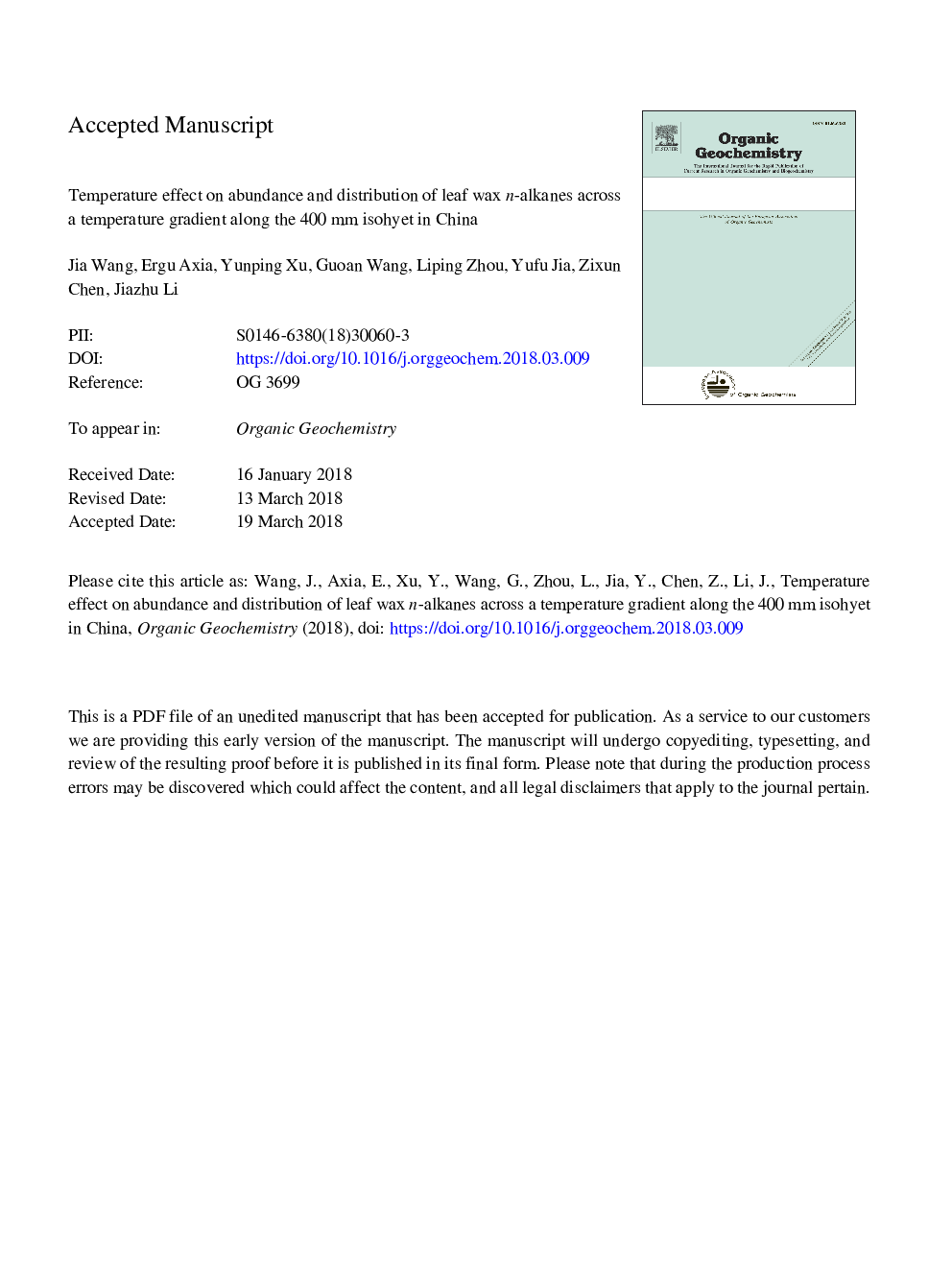| Article ID | Journal | Published Year | Pages | File Type |
|---|---|---|---|---|
| 7816962 | Organic Geochemistry | 2018 | 39 Pages |
Abstract
Long chain n-alkanes are plant wax biomarkers that are widely used in paleoenvironmental reconstructions. Temperature is an important influence on the composition of leaf wax n-alkanes. However, to date, understanding of changes in the abundance and distribution of leaf wax n-alkanes with temperature remains unclear. The main reason is that the interference of precipitation on leaf wax n-alkanes has not been effectively removed in most investigations of natural ecosystems. We sampled 357 plants across a temperature gradient along an isohyet in China to minimize the influence of precipitation and evaluate the effect of temperature on the abundance and distribution of leaf wax n-alkanes. Most plant functional groups showed similar distributions in total n-alkane concentration (âalk), carbon preference index (CPI) and average chain length (ACL). CPI values were not sensitive to temperature change. âalk values were negatively correlated with summer mean temperature (TJJA, June to August) for most plant functional groups. ACL values were always positively related to temperature, especially TJJA. However, large variability in âalk and ACL occurred within plants from the same site. Therefore, this study suggests that âalk and ACL can indicate relative environmental temperature, but they should not be used as quantitative proxies of paleo-temperature.
Related Topics
Physical Sciences and Engineering
Chemistry
Organic Chemistry
Authors
Jia Wang, Ergu Axia, Yunping Xu, Guoan Wang, Liping Zhou, Yufu Jia, Zixun Chen, Jiazhu Li,
